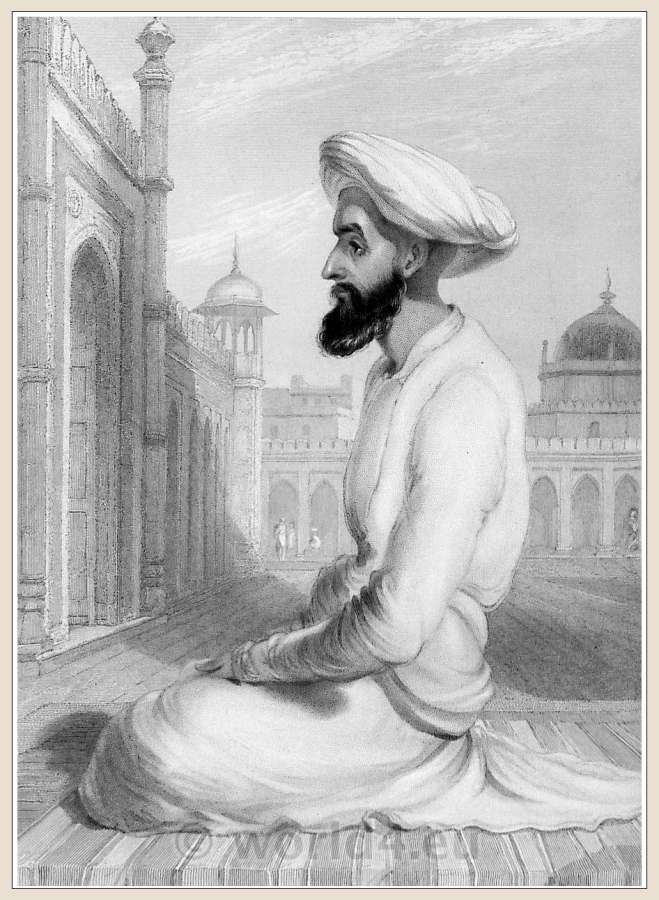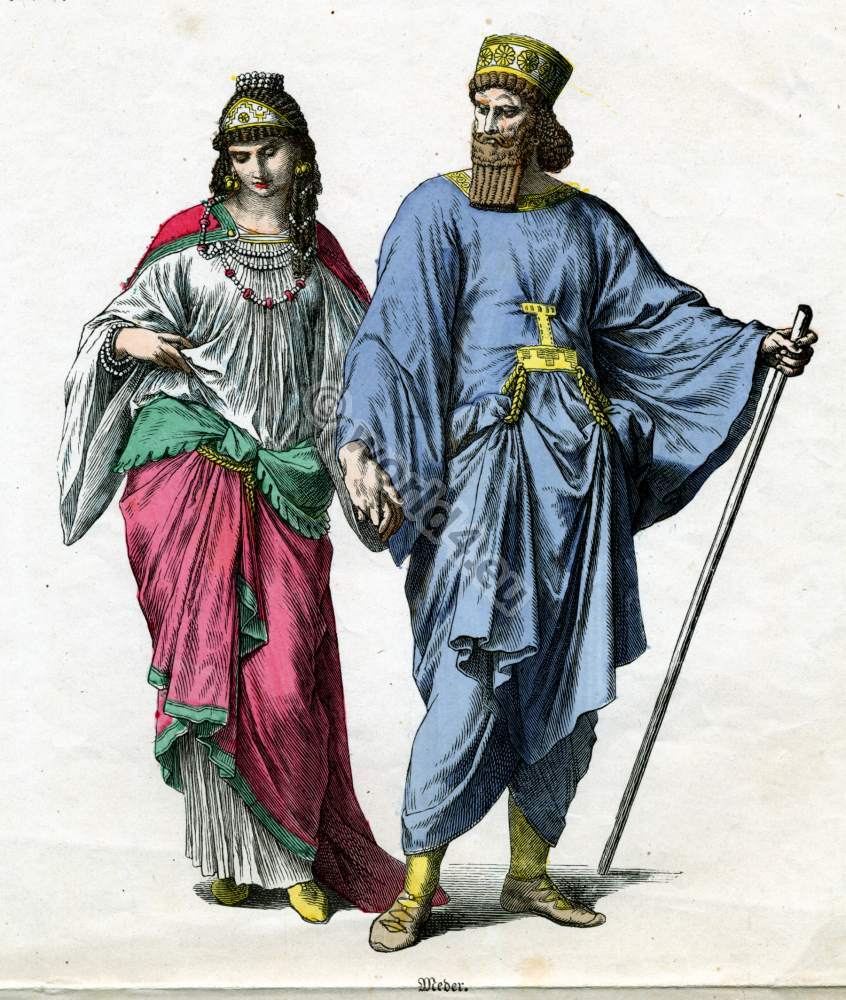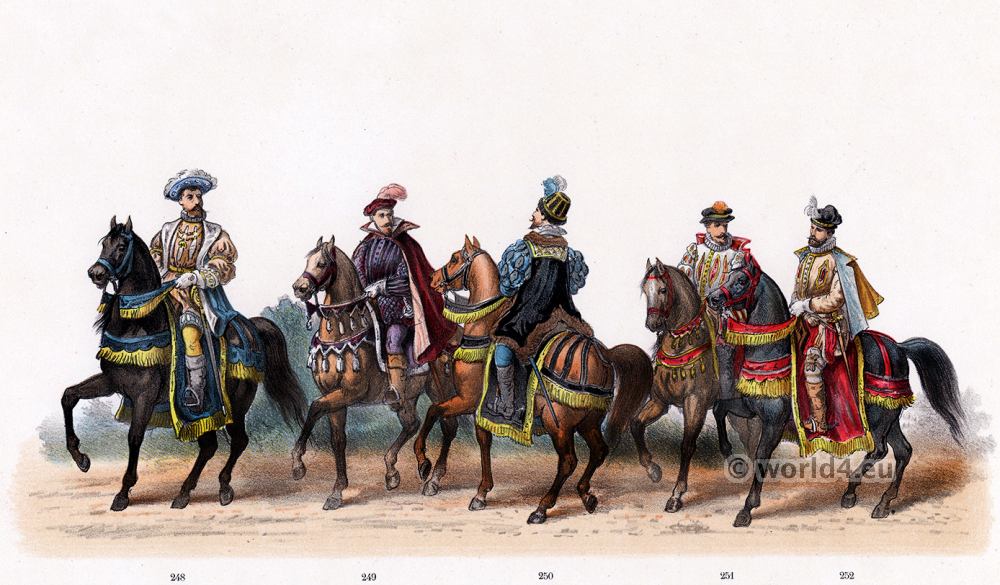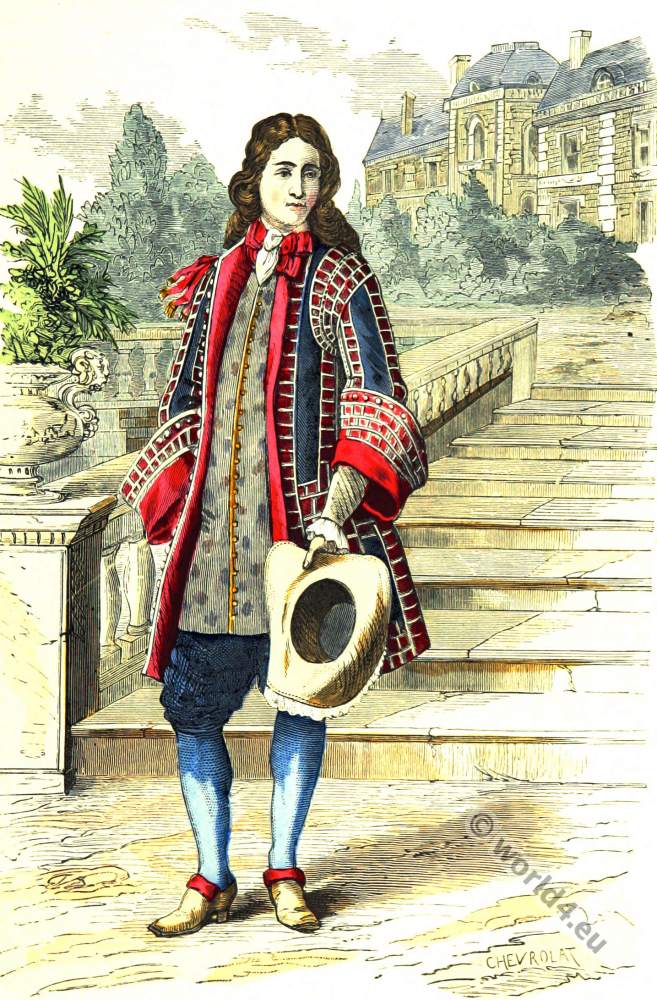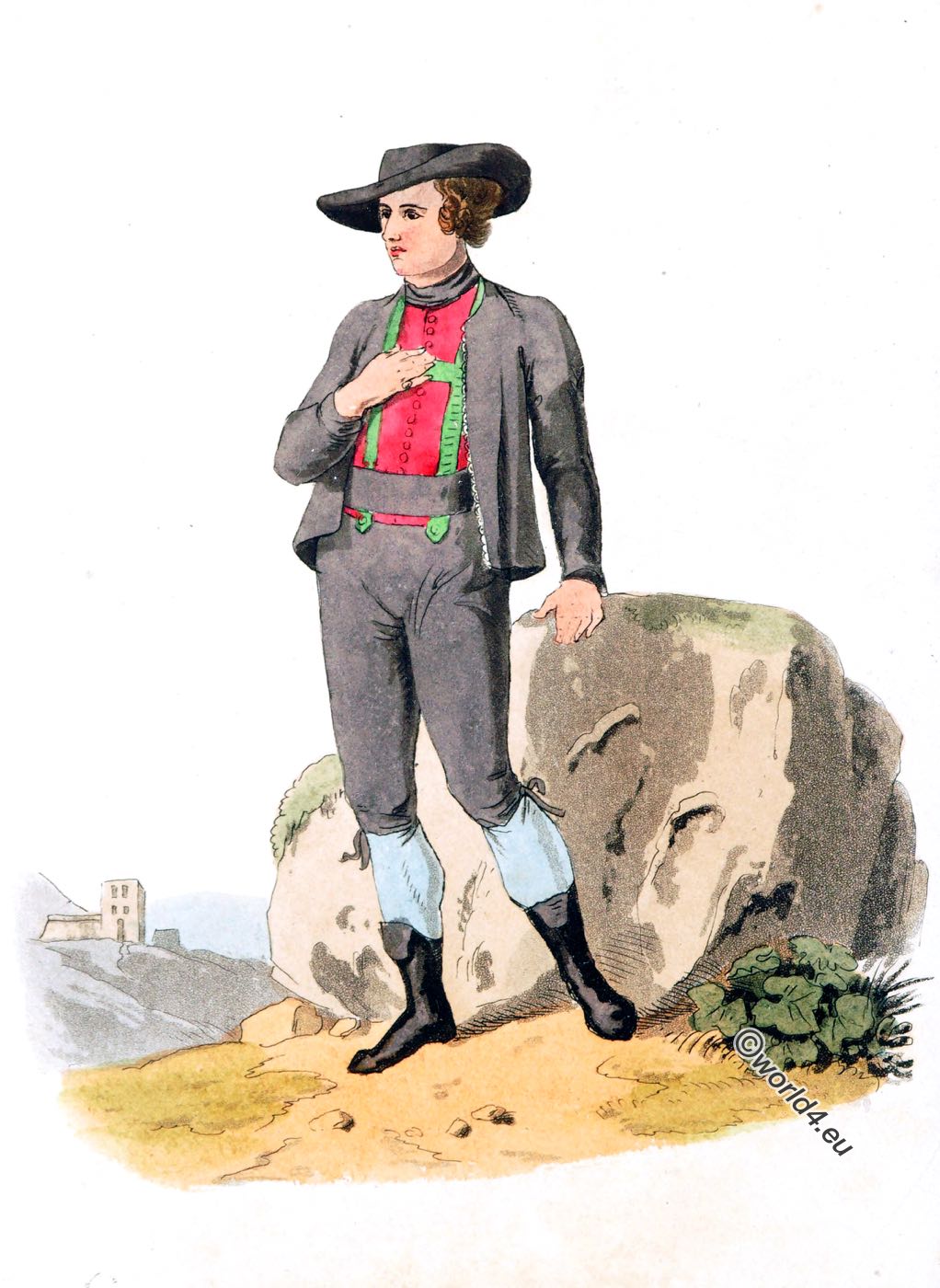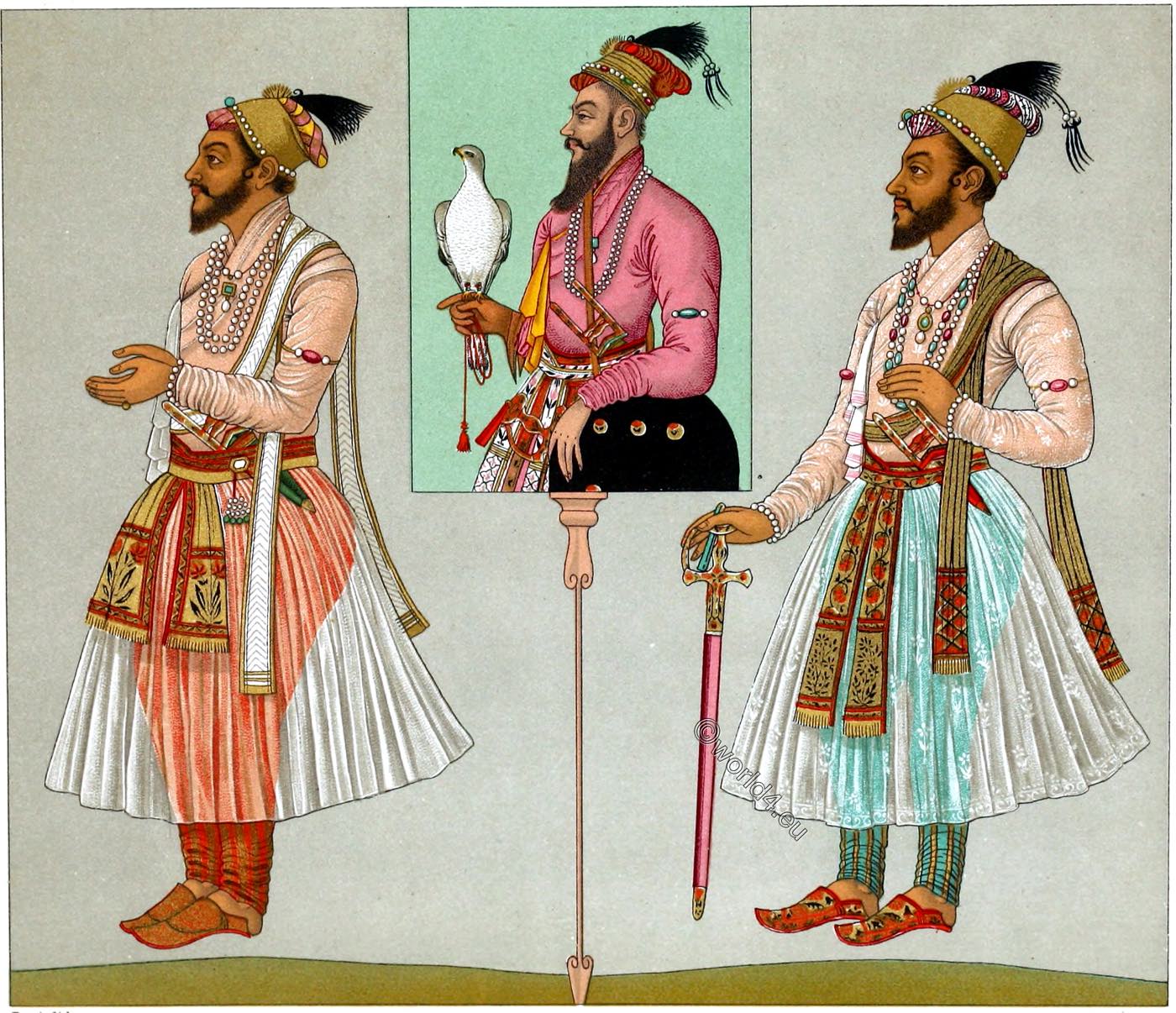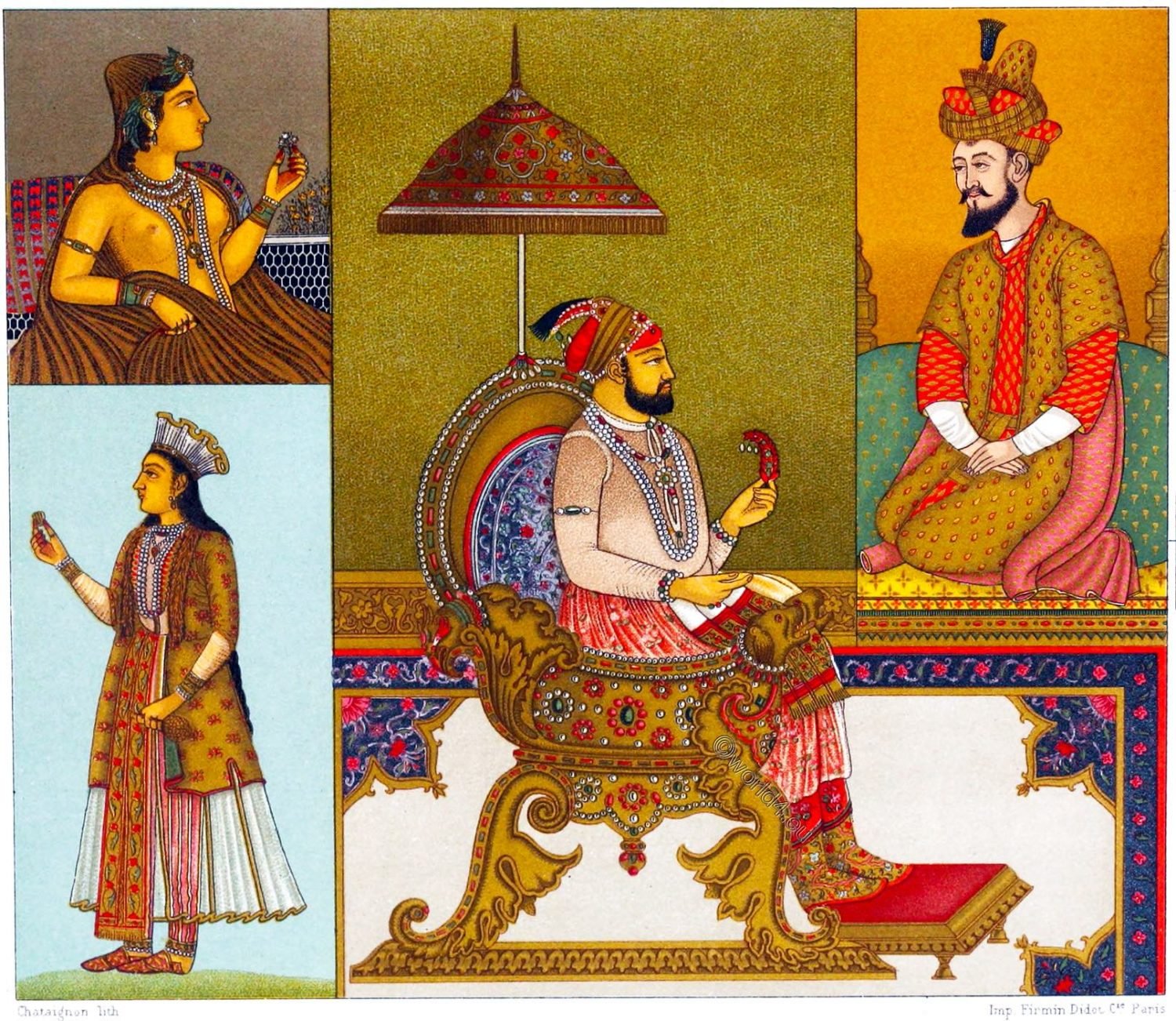
1, 4,
3,
2,
INDIA MUGHAL EMPIRE. EMPERORS AND WOMEN.
No. 4. Nasir ud din Muhammad Humayun, Indian emperor from the Mongolian dynasty, born in 1508, came to the throne in 1530 and died in 1556.
No. 3. Farrukhsiyar or Farrukh Siyar (1683-1719), Indian emperor from the same dynasty, came to the Moghult throne of Delphi in 1712 as the 10th Grand Mogul of India. The older of the two is depicted in the usual court attire of an audience. With few exceptions, Indians do not use either chairs or tables. They sit down on carpets, mats and cushions. When holding audiences, the prince sits down on an estrade, which is usually one step high and surrounded by a low gallery.
The characteristic feature of the ruler is the upright standing plume. The throne in the true sense of the word is a seat with pedestal and canopy, which is formed by a parasol. The ruler sits on this throne at large ceremonies and during negotiations with foreign powers. The etiquette requires that on such occasions the prince pulls over his clothes a long transparent robe of white muslin, which is tied around the hips. The Sultan also wears the small turban decorated with jewels.
Humayun was the son of Babur, the founder of the Mughal Empire of the Mongol dynasty in India, and led a very eventful life, as he had to fight constantly for the dominion inherited from his father and remain in exile for thirteen years before he could ascend the throne of Delhi.
Farrukhsiyar, a grandson of Grand Mogul Aurangzeb, had been raised to the throne by rebellious princes, which he took for seven years without being able to free himself from the tutelage of the vassals. When he made the attempt, he was deposed.
No. 1. Mogul lady in a house costume, which is extremely light considering the heat. But the Indian women do not give away the jewellery even in the negligee. The women of some castes were only allowed to appear before persons of higher rank than them with bared breasts. No. 1 is a married woman, which can be recognized by the gold jewelry on her chest, which the husband of the newlyweds hangs around her neck after the ceremony. The body is rubbed with saffron. The fingertips are dyed with henna. The only piece of clothing is an extremely fine silk skirt embroidered with gold, which is wrapped around the hips. Such pure silk fabrics are a speciality of the Hindustani textile industry.
No. 2. Young Mongolian girl, it seems, in bridal costume. The bonnet is made of stiffened muslin with gold trim. The apron usually forms a wedding gift from the groom, which is given on the day of the wedding. This apron is always very valuable and even the arms are made of silk.
After Indian paintings from the last century, which were in the library of Ambroise Firmin-Didot.
Source: History of the costume in chronological development by Auguste Racinet. Edited by Adolf Rosenberg. Berlin 1888.

